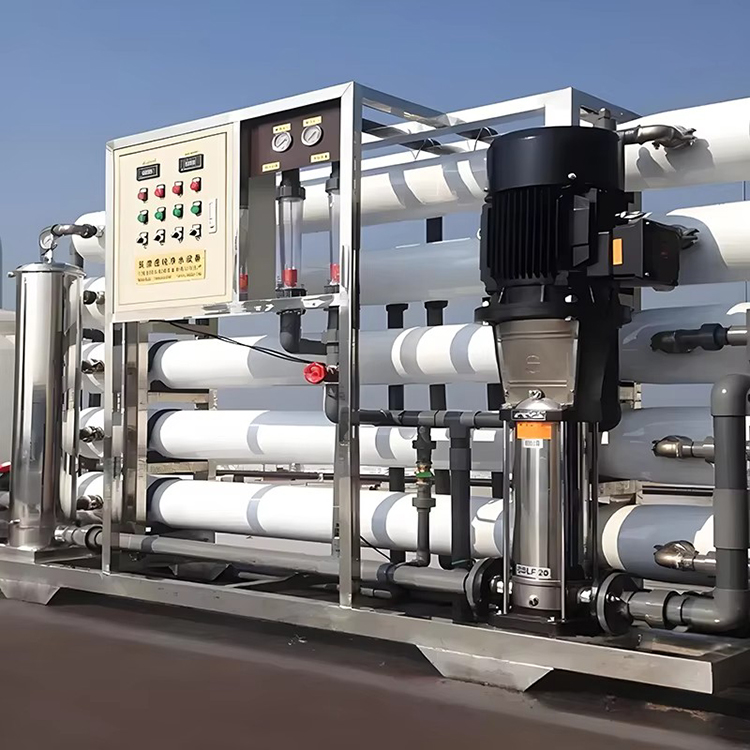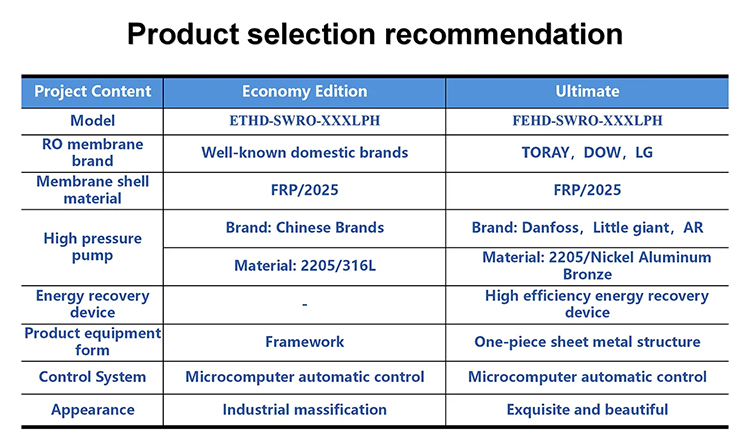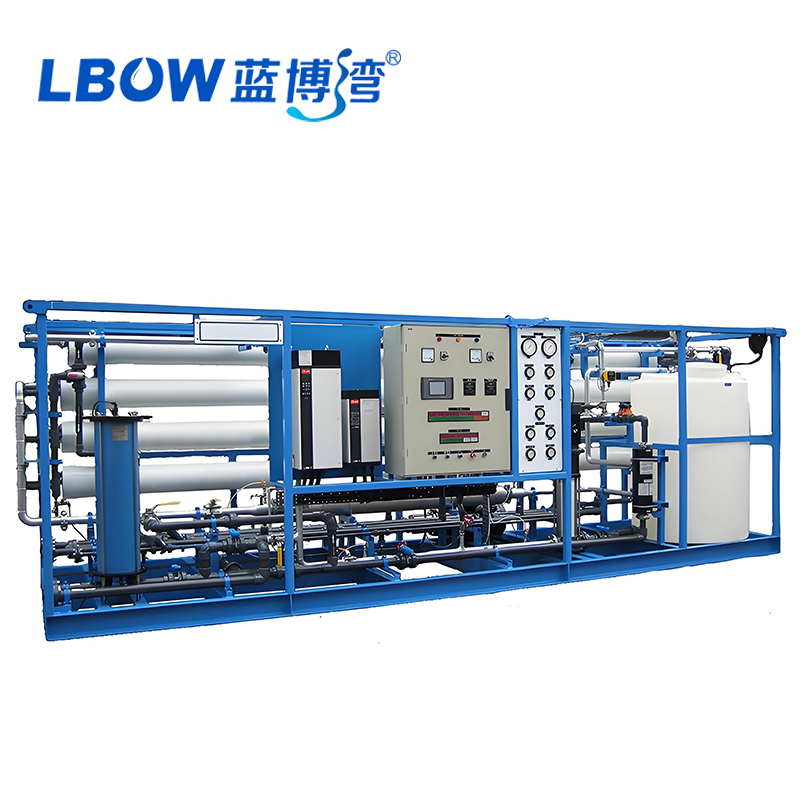- Home
- Product
- Seawater desalination equipment
- EDI ultrapure water equipment
- Laboratory ultrapure water machine
- Ultrafiltration equipment
- Sewage treatment equipment
- Container integrated water purification equipment
- Double-stage reverse osmosis equipment
- Pure water equipment
- Single-stage reverse osmosis equipment
- Medical purified water equipment
- Hospital pure water equipment
- Ultrapure water equipment
- Recycled water reuse equipment
- Commercial pure water machine
- About
- Case
- News
- Contact
Over the past 5 years, we have solved water problems for tens of thousands of enterprises
产品展示
products
- Sewage treatment equipment
- Laboratory ultrapure water machine
- Ultrapure water equipment
- EDI ultrapure water equipment
- Medical purified water equipment
- Hospital pure water equipment
- Pure water equipment
- Single-stage reverse osmosis equipment
- Double-stage reverse osmosis equipment
- Seawater desalination equipment
- Ultrafiltration equipment
- Container integrated water purification equipment
- Recycled water reuse equipment
- Commercial pure water machine

Seawater Desalination RO System Reverse Osmosis Plant Desalination Salt Water to Drinking Water Treatment Machinery
Seawater desalination refers to the process of converting high salinity seawater (or bitter salt water) into low salinity fresh water to meet the needs of drinking, irrigation and industrial water.
Seawater desalination refers to the process of converting high salinity seawater (or bitter salt water) into low salinity fresh water to meet the needs of drinking, irrigation and industrial water.
Product Description

Salt water to drinking water plant
Equipped with RO membrane two-way water inlet technologyThe purification flow path is longer, efficient and fast!
Salt water to drinking water plant is a highly integrated water treatment system. It integrates the various units required for desalination to form a complete solutionwhich is designed to efficiently convert seawater into fresh water for drinking or industrial use. This type of equipment usually uses reverse osmosis (RO) technology, but other methods such as multi-stage flash (MSF) and multi-effect distillation (MED) can also be used.
Due to its high efficiency, stability, and automation, desalination plants are widely usedin various fields, which is of great sianificance to improving the utilization rate of waterresources and ensuring the safety of drinking water.

Technical features
Integrated design: various water treatment units are integrated into one device, which occupiesarea and is easy to install.
Automated operation: through the automated control system, the equipment can be operated unded.
High efficiency and energy saving: using advanced water treatment technology to reduce energsumption and improve water production efficiency.
Stable effluent water guality: through multi-stage treatment, the effluent water quality is ensurebe stable and meet the requirements of different uses.




Technical principle
Reverse osmosis operates based on the principle of selective permeability through a semipermeable membraneUnder natural conditions, water moves from a solution with a lower concentration to one with a higherconcentration (ile., osmosis). in the reverse osmosis process, external pressure forces water molecules againstthe natural flow of osmosis through the semipermeable membrane, from the side with a higher concentration tothe side with a lower concentration. Since the RO membrane highly rejects most solutes, it achieves deeppurification of water quality.
Product Features/Advantages:
1.The RO membrane separation process requires high pressure, thus necessitating the use of high-pressure pumps and pipelines. The process is energy-efficient, does not involve phase changes, and can be conducted at room temperature, making it suitable for separating and concentrating heat-sensitive substances.
2.lt can effectively remove ions, molecules, organic colloids, bacteria, etc., from water, making it suitable for treating water with high salt content.
3.lt boasts a high desalination rate and water recovery rate.
4.The membrane separation equipment is straightforward and facilitates easy automation.
5.Membrane fouling can occur during the separation process, hence regular cleaning of the membrane isrequired.
6.To prevent membrane fouling, the raw water must undergo certain pretreatments to meet specific standards before entering the RO membrane separation system.


Application scope:
Industrial Water Supply Applications:Tap water and groundwater often do not meet the quality requirements ofthe chemical, electronics, and textile industries. They need to be purified before use, and ultrafiltration membrane technology is one of the important technologies for purifying industrial water.Process Water Treatment (Separation, Concentration, Fractionation, and Purification) Applications:ln various industrial production processes, there is often a need to separate, concentrate, fractionate, and purify certain aqueous solutions. Traditional methods include precipitation, filtration, heating, freezing, distillation, extraction, andcrystallization processes.
Food Industry Applications:Membrane technology has been adopted in the clarification and concentration of soy sauce and vinegar, juice clarification, dairy product production, and the sugar-making industry.Various industrial Production Applications:in processes that require molecular-level concentration and separation, membrane technology can be used. For example, in-line purification of automotive electrophoretic paint uses ultrafiltration membranes to remove impurities and continuously ensure paint quality; the fuel industry usesultrafiltration membrane technology to separate and concentrate intermediates.Environmental Protection and Water Resource Utilization Applications:Membrane technology is widely used inwastewater treatment, pollution prevention, and comprehensive utilization of water resources. in many cases, itnot only treats wastewater but also recovers useful substances and energy.
Wastewater Treatment and Reuse:1.Treatment and reuse of printing development wastewater can meet discharge standards and allow for recover
y using membrane technology.2.Electroplating wastewater can be treated with membrane technology for water reuse and recycling of contami
nants.3.Membrane separation can remove colored dyes from dyeing wastewater, which can then be reused. indigo dye can be recovered from denim dyeing wastewater.4.The membrane used in papermaking wastewater can separate the lignin and pigment in the wastewater, and the purified water can be discharged or reused.
Seawater Desalination Applications:
1 .Seawater desalination technology: Membrane distillation combined with marine engine heat exchangers utilizes waste heat to produce fresh water, suitable for medium and small fishing vessels for long-distance fishing operations.
2.Brackish water desalination technology: Natural brackish water is desalinated to the required water quality standards using membranes.

what app
Address: No. 9655, Tingwei Highway, Jinshan Tinglin Industrial Zone, Shanghai
Mobile phone: +86 17717591248
WhatsApp: +852 5534 9894
Email: bosen7298@gmail.com
- Home
- Product
- Seawater desalination equipment
- EDI ultrapure water equipment
- Laboratory ultrapure water machine
- Ultrafiltration equipment
- Sewage treatment equipment
- Container integrated water purification equipment
- Double-stage reverse osmosis equipment
- Pure water equipment
- Single-stage reverse osmosis equipment
- Medical purified water equipment
- Hospital pure water equipment
- Ultrapure water equipment
- Recycled water reuse equipment
- Commercial pure water machine
- About
- Case
- News
- Contact



